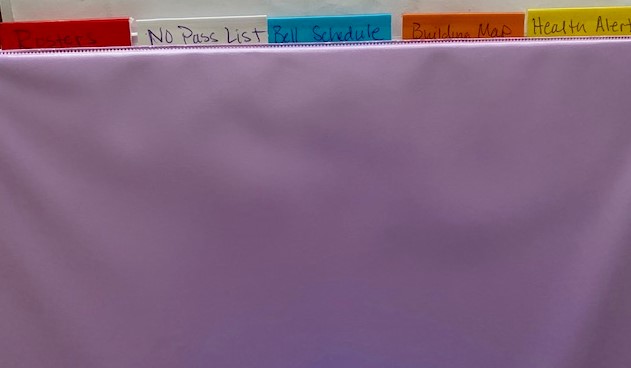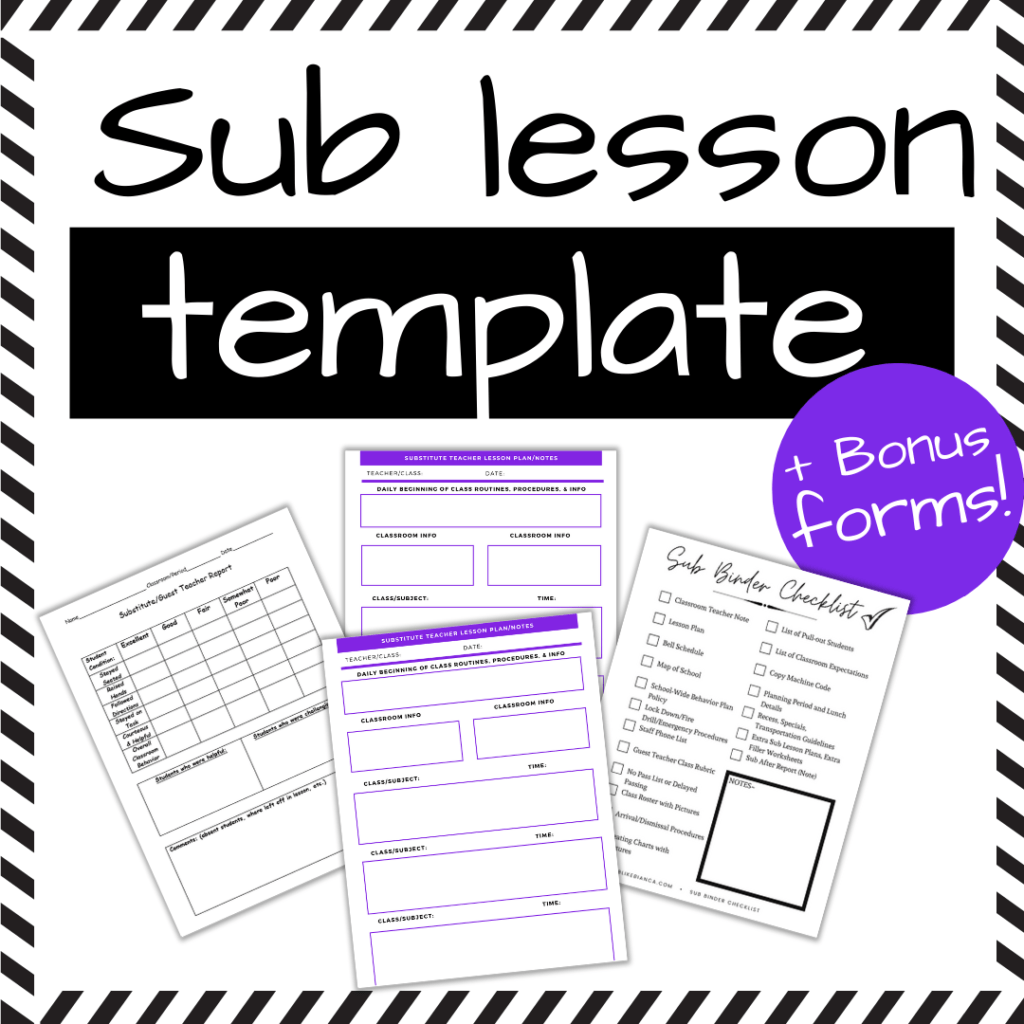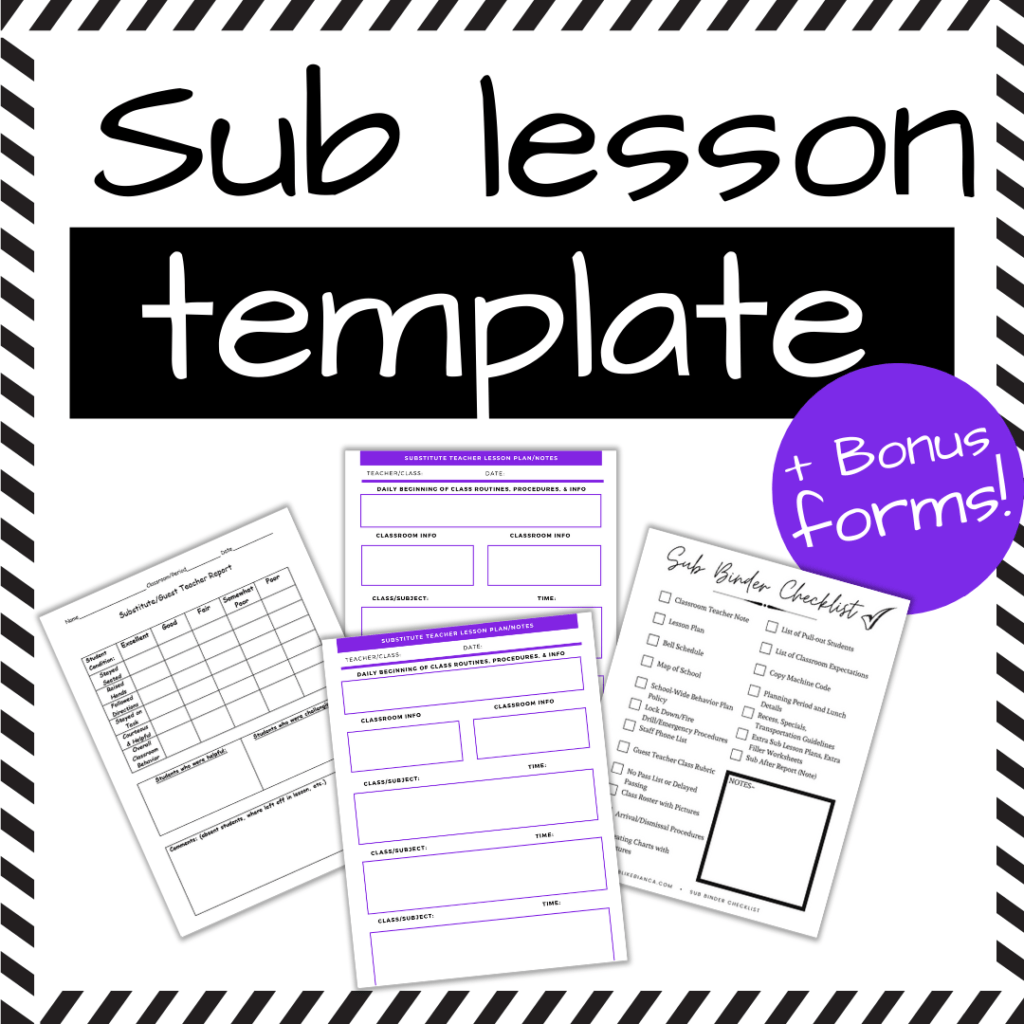After being a substitute teacher for over two years, I knew exactly what I needed to add in my sub binder. My first few years of teaching, I just created a sub folder and would stuff extra lesson plans and various worksheets in there that I thought would work well.
I honestly didn’t know I needed to create an actual sub binder because it wasn’t something, I learned how to do during student teaching. Thinking back, it wasn’t something I learned how to at all throughout my pre-teaching classes. It wasn’t until substitute teaching; I noticed a either a sub tub or a sub binder nicely placed on the teacher’s desk that I knew I needed this when I became a full-time teacher.
But when I started my very first year of teaching, instead of putting together a sub binder at the beginning of the year, I wrote out 3 pages of sub notes. Jamming everything I could remember into those notes, I then left a bunch of extra materials all over just to be safe.
Instead of having everything prepared and in one place. It took hours to complete my sub notes and I knew I at least needed to cut those hours in half!
How to Prepare for a Substitute Teacher?
The next time I had teacher directed hours, I decided to put together an actual substitute binder. I knew what it meant to have a great planned out day for a sub and I still always volunteered to do class coverage. I began making a list of all the things I would need to incorporate into a binder for a substitute and students to have a successful day.
What Should be in Your Substitute Binder?
1. Classroom Note from Teacher
In my classroom notes, I would mention that all my students required modeling and frequent checks for understanding. This is because I taught special education and I wanted to make sure sure to let them know that every student had an IEP and will require special accommodations.
I would give them a general list of accommodations to help. I would also thank them for coming and I would stick a little piece of candy to the inside. Sometimes you need a little sugar to get your through the day.
2. Sub Plan Lesson Plan!
Make easy to follow, read, and implement.
3. Bell Schedule
This includes all possible alternate schedules (late start/early release) and assembly.
4. Map of School
Highlight staff restrooms, teacher’s lounge, cafeteria, gym, neighbor/buddy teachers in relation to your classroom.
5. School-wide Behavior Plan Policy
6. Lock Down/Fire Drill/Emergency Procedures

7. Staff Phone List
Highlight extensions to the office, neighbor/buddy teachers, school resource officers, etc.
8. Guest Teacher Class Rubric
These are particularly helpful and quick for a sub to use. Especially if you teach multiple classes like middle and high school teachers.
9. No Pass List or Delayed Passing Expectations
This is for students mostly at the secondary level for students that demonstrated behavior that requires a certain supervision due to safety concerns. If you have students in this area, make sure to add the expectations and a list of students in the class roster section.
10. Class Rosters with Pictures
a. Highlight students that may need special accommodations or modifications and health alerts
b. A student that can be helpful
c. A student that is tech-savvy and can easily assist
d. Students who may have open access to the restroom, counseling office, nurse, or to call home.
11. Seating charts with pictures
12. Arrival/Dismissal Procedures
Do you do lunch count in the morning and put up chairs before the end of the day bell?
13. Emergency sub lesson plans
This can be extra time-filler worksheets, or a list of things students can do if they are completed early with assignment.
14. List of pull-out students
If students are going to speech/OT/PT/reading or math intervention, etc.
15. Your own classroom expectations
a. Do you want student to go to the library?
b. Do you want student using technology/laptop/tablet?
c. Bathroom policy
d. Getting water
e. Turning worksheets/assignments in.
f. Working with partners/small groups
g. Being prepared/obtaining supplies – I had quite a few sub teachers give pencils out to students from my desk and I would make sure to let the sub know how students needed to go about getting/borrowing classroom supplies.
17. Copy Machine Code
Leave a code if needed- if you have one.
18. Planning Period and Lunch Details
What should they do during this time? Do you want them to grade, organize, make copies? Are they supposed to report to the office?
19. Recess, Specials, Transportation Guidelines
Elementary teachers this is just a reminder for you to include this in your sub binder. 🙂
20. After Report –
I just started using an after report mainly because I was having a lot of substitute teachers not leaving a sub note. Some sub teachers just use the guest teacher class rubric in #8, it all depends on preference.

Final Thoughts
If you are preparing for an emergency sub, long-term sub, or even class coverage, keeping these things together will assist when you need a substitute to take over your classroom. Once your super substitute binder is complete, all you need to do is to create minor preparations and update as needed.

